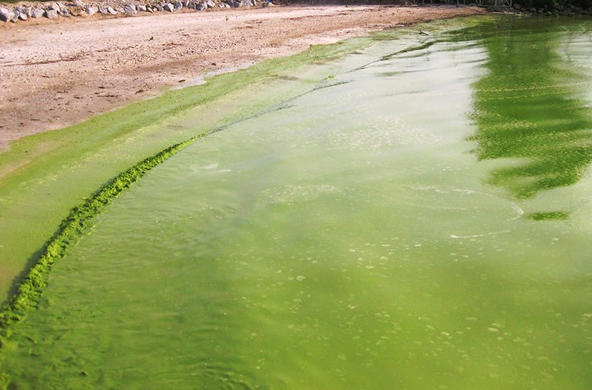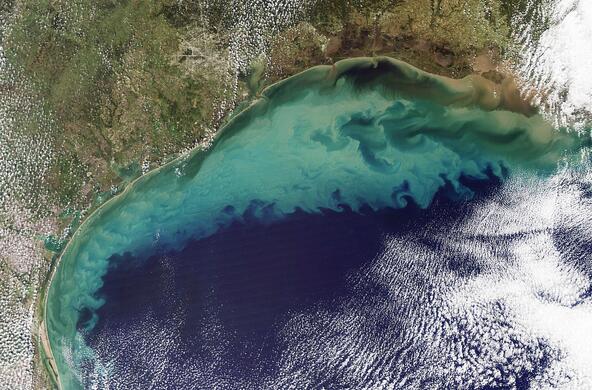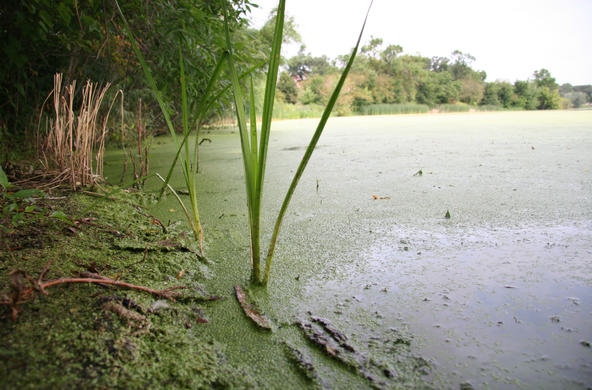Every summer morning, Midge Eliassen has the same routine. She walks out her back door, down the steps, and onto her dock on Lake Sunapee.
There, she pulls out a plankton net and takes a sample from the water, shipping off the results to be analyzed in a lab at Dartmouth College.
She's been doing this, rain or shine, for 12 years. "I get a chance to look at the world and see what the lake looks like each day, which I really love," she said.
Eliassen's been coming to Lake Sunapee since she was a baby. She even met her husband on the lake in the 1950s, when she was just 16. Now, their grandchildren come here to play.
But as the decades have gone by, she's become more worried about the lake's health.
"The bottom of the lake when I was a kid was completely different from what it is today," she said. "We used to pick up garnets from the bottom of the lake cause you could see them."
The water is murkier now, and a big worry — the reason she's out here sampling every morning — is cyanobacteria.
Elliasen is not alone in her concern. So far, New Hampshire's lakes haven't been as badly affected as many in other parts of the country, but it's unclear how, or if, that might change in the coming years.
State environmental officials are increasingly warning lake-goers to watch out for blue-green scum in the water, saying it may be toxic to humans and animals. And researchers everywhere have been scrambling to map what's driving these blooms.
There's a lot they still don't know.
"Even with all the data that we have, we can't predict whether a bloom will happen any better than saying, the bloom tomorrow will look like the bloom today," said Kathleen Weathers, a senior scientist at the Cary Institute of Ecosystem Studies in New York. She's been working with Elliasen and the Lake Sunapee Protective Association on this issue for years.
Blooms are known to be more common in August and September, Weathers said. But the exact drivers — perhaps a combination of warmer water temperatures, a shorter season of ice-cover, or nutrient inputs from runoff — are unclear.
On a recent morning, Weathers and others from Dartmouth and the University of New Hampshire gathered on Eliassen's back deck. They're on a mission this season to dramatically expand the amount of information they can access on how our lakes have been changing over time.
Once they assembled, two Dartmouth researchers hopped in Eliassen's boat, and she steered out across the water. They mapped their location and dropped anchor, taking a number of measurements of the lake's physical characteristics — things like water temperature and dissolved oxygen — and harvesting samples to bring back to the lab.
Then, as they were working, a drone flew overhead, operated by their colleagues on shore. Mounted on the drone was a powerful camera, able to take high-resolution images of the lake. In fact, those were not the only images that would be taken of the lake's surface. Something else would soon pass above, most likely unnoticed by everyone on the ground: satellites.
"Landsat 8, which is a NASA operated satellite, and Sentinel-2, which is a European Space Agency satellite, both happen to be flying over this part of New Hampshire tomorrow," said Dave Lutz, a researcher at Dartmouth who has funding from NASA to run this study.
He and his team are trying to address a critical challenge in studying cyanobacteria here in the Northeast: a lack of data.
In order to understand out how blooms have been changing over time, researchers need comprehensive, consistent measurements from lakes across our region. Those datasets simply don't exist, but one thing that is available is satellite imagery.
As satellites travel, they are constantly taking images of Earth's surface. So, if the researchers can a model a relationship between those images and physical lake characteristics, they can essentially unlock a new trove of data.
"That will allow us to have a much better handle on what's driving these blooms, where they're occurring, and ultimately what we might be able to do to modify them," Weathers said.
The group has also sampled other lakes across the Northeast as part of their effort this summer. They're are planning at least one more day of sampling on Lake Sunapee before they bring the season to a close this year.






